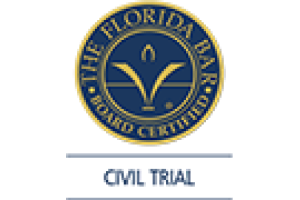Client Reviews
Bridge Collapse
Bridges are one of the greatest feats of engineering, architectural and structural success. These increasingly sizable, complex structures allow our society to maintain key transport of goods, people and communications.
But Associates and Bruce L. Scheiner, Attorneys for the Injured, know constructing them has never been without hazards. For example, about 20 people were killed during construction of the Brooklyn Bridge in the 1880s. During construction of the Golden Gate Bridge in the 1930s, 11 workers died.
And yet, our reliance on these structures requires that they be constructed and/or repaired in a timely manner. Some states report up to 23 percent of bridges within their borders are structurally deficient and in need of repair, according to the Federal Highway Administration. In Florida, just 2 percent are deficient, but that’s because most were constructed recently. Those bridges will eventually need repaired and, of course, we’re always erecting new ones.
But it’s not just construction workers who face risks. According to the Occupational Safety & Health Administration’s fact sheet on Roadway and Bridge Inspection and Repair, this kind of work can be hazardous to civil engineers and inspectors, equipment operators, divers and others.
Some of the major causes of bridge-related construction injuries include:
- Falls
- Working on or over water/in slippery conditions
- Contact with electrical lines and/or live electrical equipment and other utilities
- Cutting, welding and burning injuries
- Power and hand tool hazards
- Being struck by falling or flying objects
- Exposure to lead, silica, dust or asbestos
Some examples of injuries and fatalities that have occurred as a result of bridge collapse include:
- A 35-year-old construction worker and father-of-four killed in Cincinnati, during demolition of an Interstate 75 overpass. The worker was driving an excavator on top of an older span of bridge when the bridge collapsed. Outside engineers have speculated the company improperly worked from the outside of the bridge toward the middle, weakening its structural support.
- A 34-year-old carpenter was killed on the Washington 520 bridge project in Seattle when he fell off the edge of a bridge deck, landing on a hard surface some 70 feet below.
- In North Carolina, one worker was killed and four others injured while pouring concrete for a pedestrian bridge on a college campus near Raleigh. As they did, a 140-foot section of the bridge collapsed some 40 feet to the ground.
- Two construction workers, ages 63 and 53, were killed in Alabama when the wagon lift in which they were traveling separated from the side of the bridge they were crossing, and they fell 90 feet to the ground. Families for both workers later filed wrongful death lawsuits.
- In Florida, an 18-year-old high school student was killed in Taylor County on the Aucilla River Bridge on US Highway 98 when he and three other workers were unbolting panels in the course of disassembling a temporary bridge. When the last bolt was taken out, the panels collapsed on top of the teen. His parents, who later sued the construction firm, allege the teen never attended a safety meeting, had no prior construction experience and had only been on the job four days when the accident happened.
Because of high risk on these work sites, the U.S. Department of Transportation’s Federal Highway Administration set forth a series of safety hazard programs, practices and procedures for working on bridge repair, renovation and demolition.
Regulations require companies whose workers are engaged in bridge renovation, demolition and construction to provide personal protective equipment. This includes protection for head, ears, eyes an face, feet and hands. Companies must also have adequate fall protection measures in place. That includes the establishment of all the major components of a fall protection program (personal fall arrest system, safety nets, guardrail systems), but also adequate training of all workers on how to prevent falls.
Where scaffolding is concerned, companies need to make sure OSHA guidelines are clearly followed. These regulations include the use of a competent person to inspect the ropes before and after each shift, to determine necessary fall prevention needs and to determine whether weather conditions are too severe for scaffolding work.
Finally, with regard to motor vehicles and mechanized equipment, supervisors have to make sure all machinery and equipment is inspected prior to each use and verify it’s in safe condition. All vehicles and equipment must have proper working lights and reflectors. Site supervisors need to also make sure only those operators who are authorized to handle the machinery are doing so, bearing in mind operation of vehicles over 26,000 pounds requires a commercial driver’s license.
There are a number of potential entities that could be held liable for a construction worker injury or death in Florida. Our experienced team of legal professionals can answer your questions and help you determine how best to proceed.
Contact Associates and Bruce L. Scheiner, Attorneys for the Injured, for a free and confidential consultation to discuss your rights. There are no fees or costs unless we win. Offices in Fort Myers, Cape Coral, Naples and Port Charlotte.
Call 800-646-1210 for a Free Consultation












